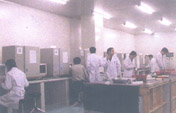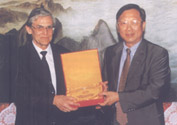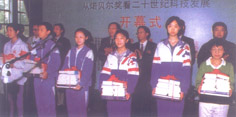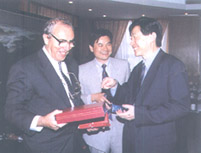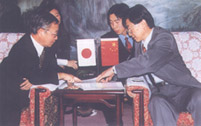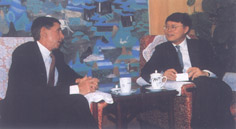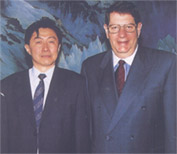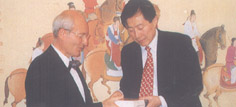| In the last 2 years, major advances
have been achieved under the CAS Pilot Project of the Knowledge Innovation Program in such
aspects as upgrading of the Academy's innovative capacity, identification and selection of
its innovation objectives, reform of its structure and operating mechanisms and the
building of a high-caliber team. The following fields, where the strategic needs of
China's socio-economic development in the 21st century intersect the frontiers
of world science and technology, have been identified as key priorities: agricultural high
technology, population and health, energy, new materials, information and automation,
space science and technology, ecology and environmental science, earth science, and other
major cross-disciplinary subjects. Restructuring
has been carried out on a large scale within the Academy. 40 institutes have been
merge-reformed under the Pilot Project. A number of research accomplishments have been
made through the innovative efforts of the research staff, which has contributed to the
development of the nation's science, technology and economy. In the field of life science
and biological technology, human genome study has made several breakthroughs. Genes
associated with some major hereditary diseases have been identified and cloned.
CAS-established cDNA-array chips have achieved satisfactory results in trial use at many
laboratories both at home and abroad. In the fields of information, automation, energy,
new materials and space science, breakthroughs have also been made, such as the
"Dawning 2000-II" super server, which calculates at a speed of 110 billion times
per second, reaching international advanced levels. Major progress has also been achieved
in semiconductor technology, nano materials and study of the behavior of materials under
special conditions and their invalidation mechanism. Altitude detection using space
particle probes has reached world levels. In addition, important advances have been
obtained in areas such as ecology, environment, earth science, agriculture, and new drug
development. |
.jpg)
